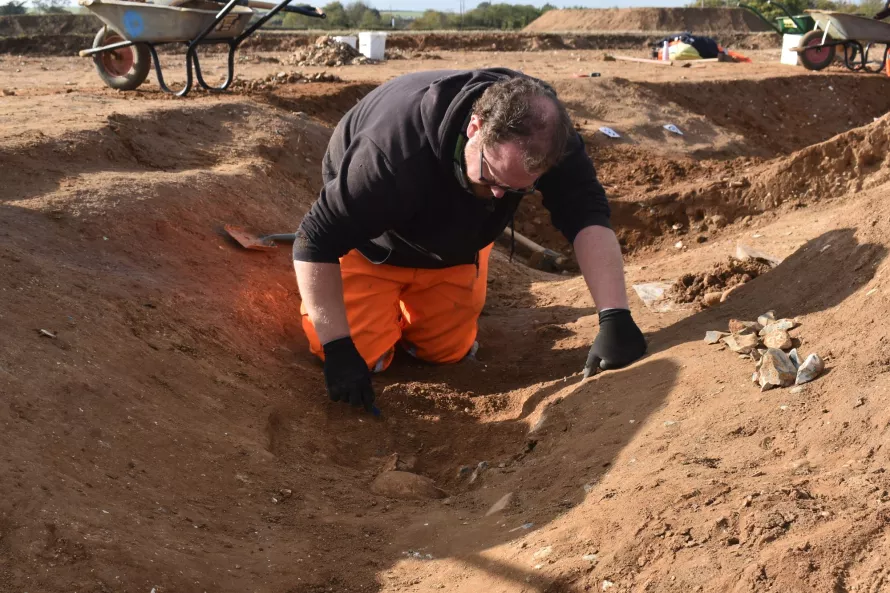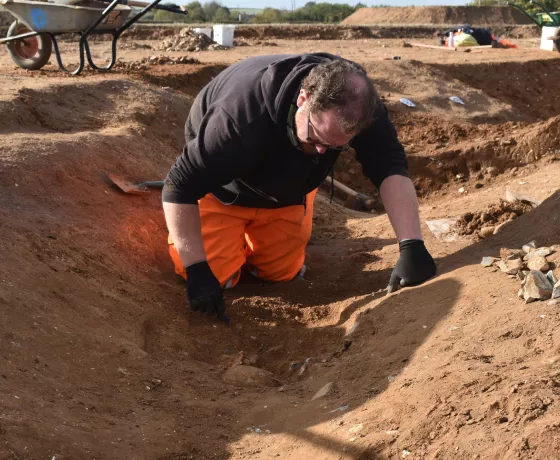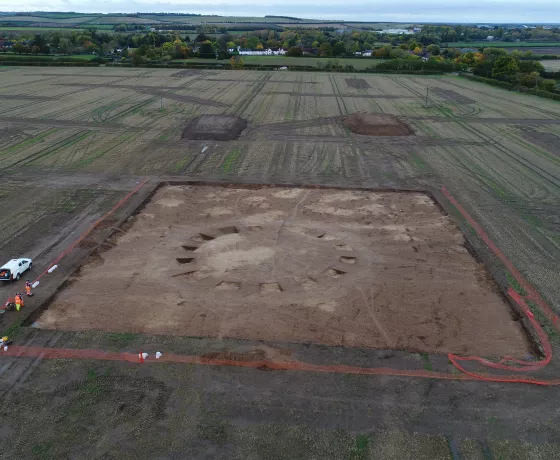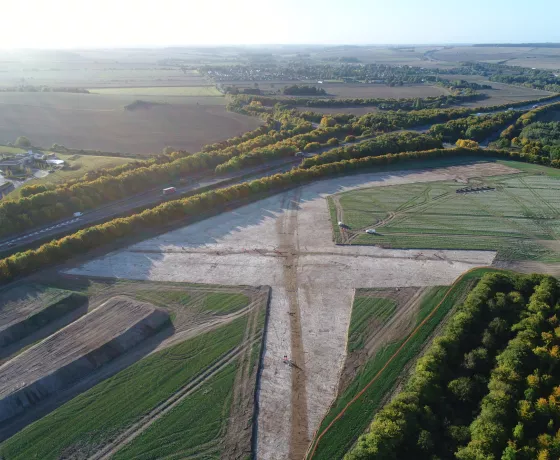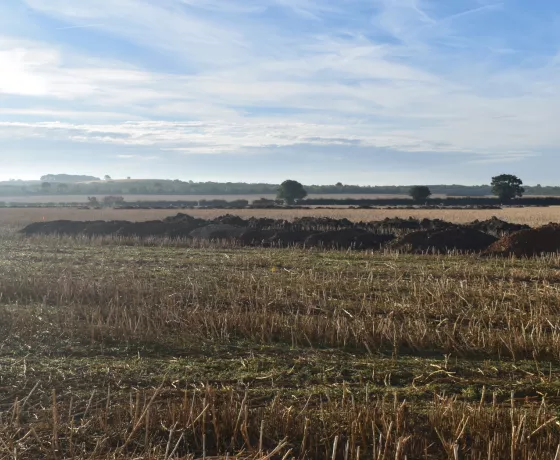At the end of 2022, we were finishing the barrow excavation in Area 5, fully excavating the barrow ditch so that the original shape can be seen in the ground. In the picture below you can see the Hinxton dig team taking out the last few sections of soil filling in the barrow ditch, which has higher organic content and is a darker brown colour compared to the surrounding natural chalky soil.
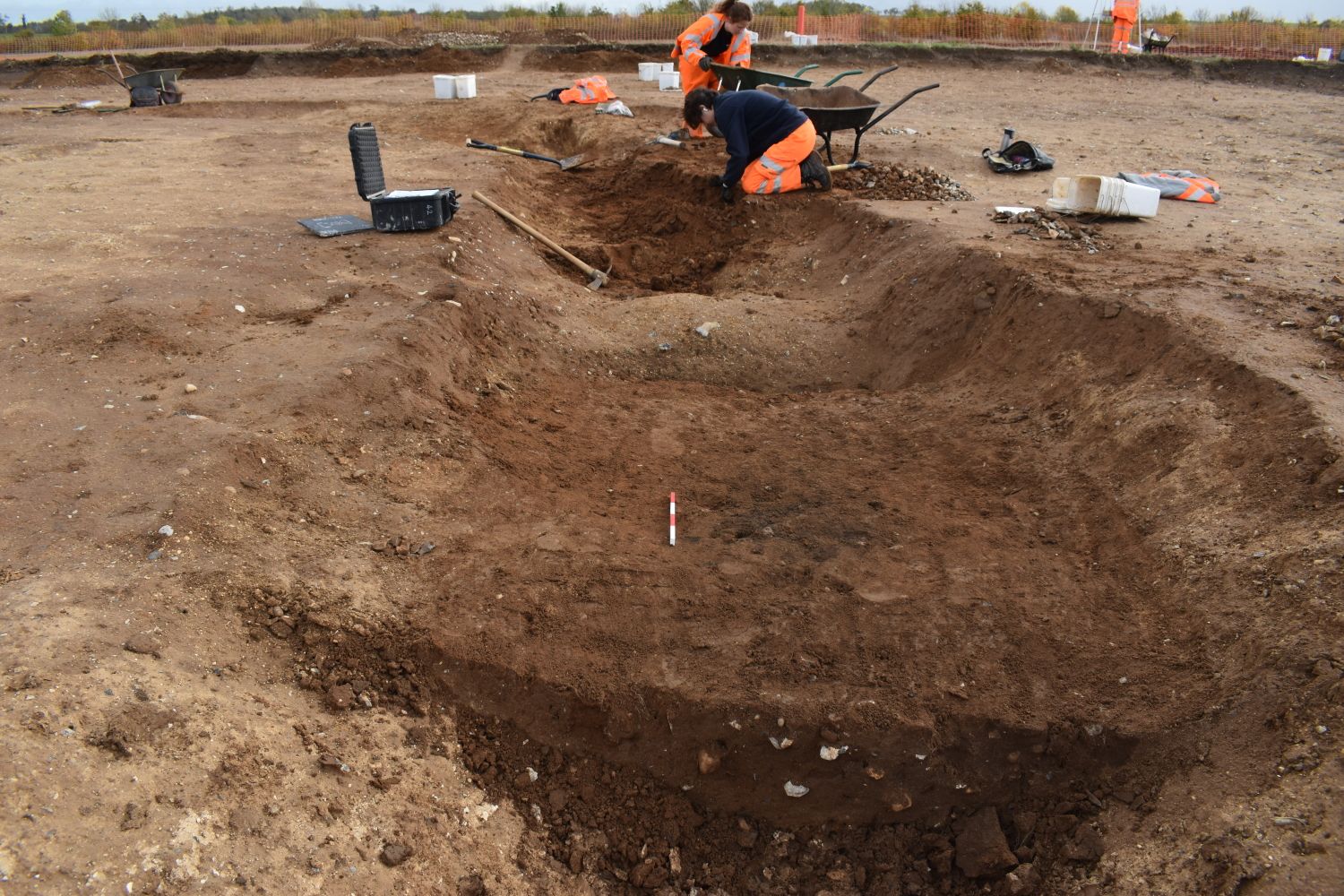
The team digging out all the remaining soil in the barrow ditch.
As the team dug further down into the remaining parts of the barrow, another two burials were discovered. One of an adult and one we assume of a child or young adult due to the size of the skeletons in the ground. They had been well preserved considering the acidity of the soil in Area 5. They are both a form of crouched burial, with the arms folded in and knees tucked up, which is typical for Bronze Age barrows.
The burials were carefully excavated and recorded in situ using photogrammetry. This is a process where archaeologists take a series of photos from all angles of the subject (in this case a skeleton) to create a 3D model. As you can see in the photo below, special targets are used to ensure all of the photos can be manipulated into the correct space in order to create the 3D model for analysis.
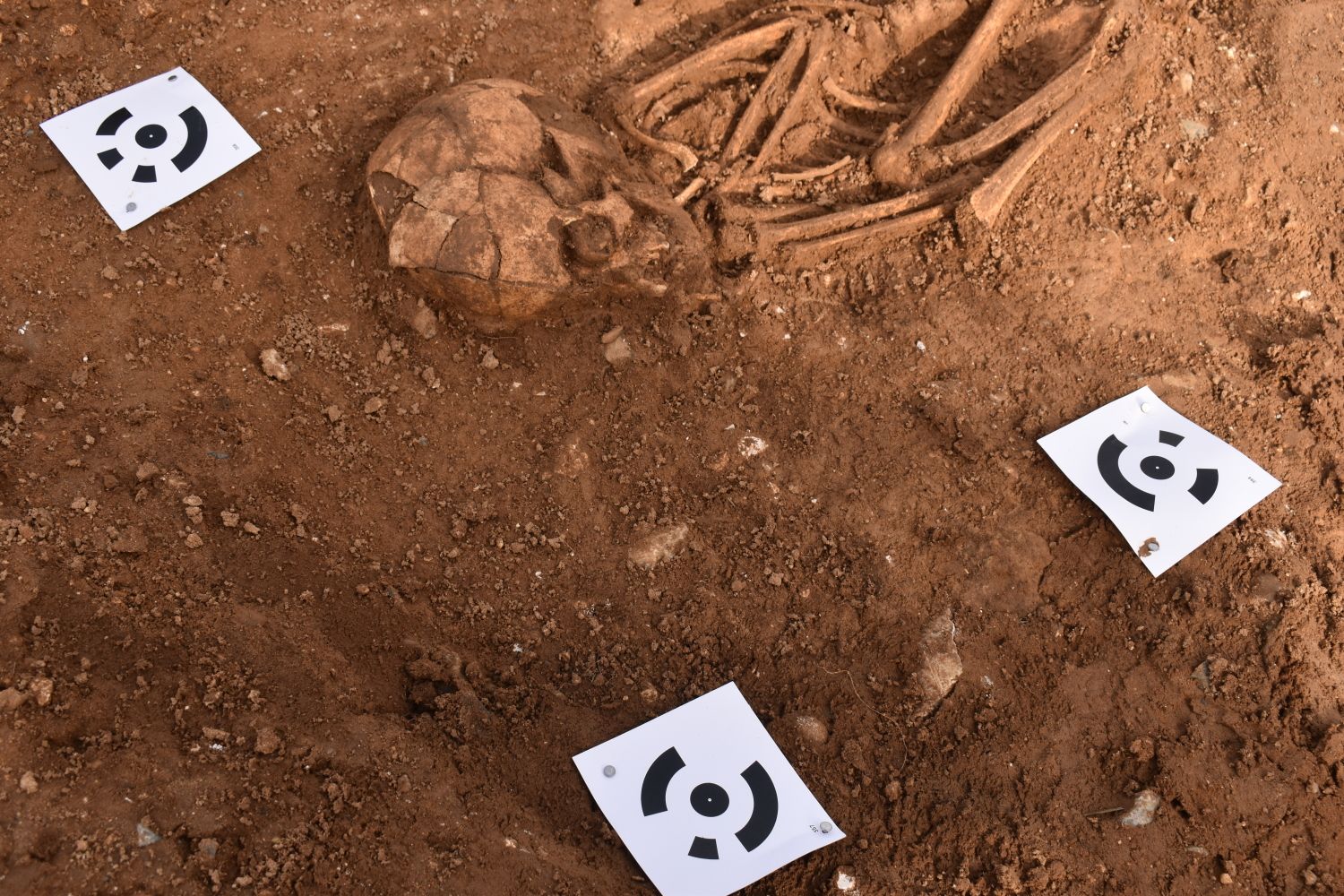
One of the two crouched burials found as the ditch of the barrow was excavated.
Before this technology was available, archaeologists plotted and drew accurate scale drawings of burials by hand. Now, we just sketch a diagram as a reminder about the location and number of photogrammetry targets. Photogrammetry allows for much more rapid, consistent and accurate recordings – particularly with a crouched burial position such as this.
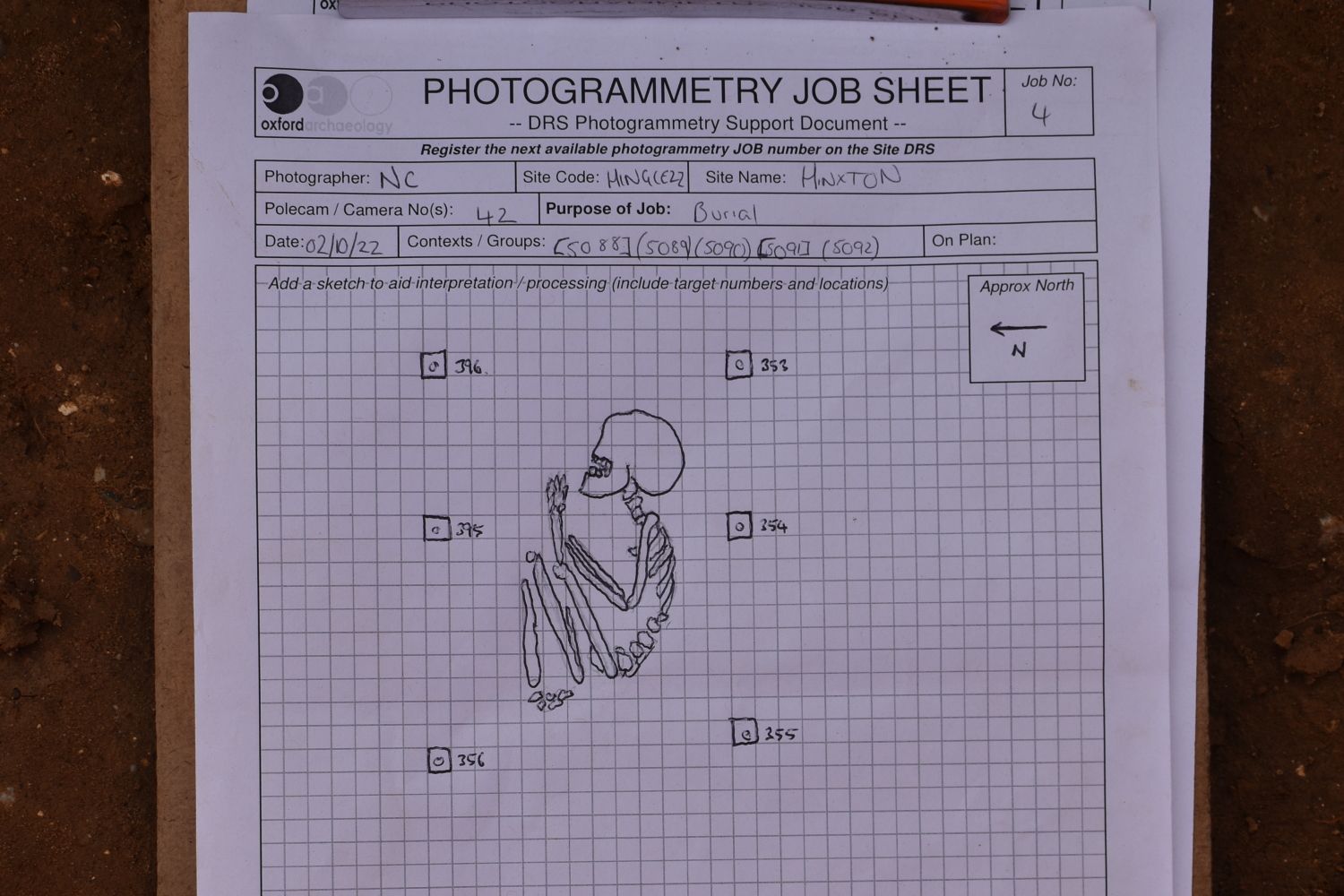
A sketch to show the location of photogrammetry targets next to the skeleton.
Other posts in this collection
Read our latest posts about the archaeological investigations at Hinxton.

